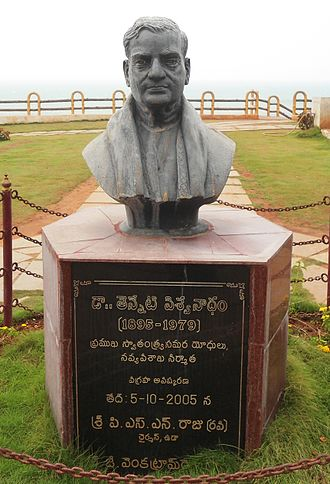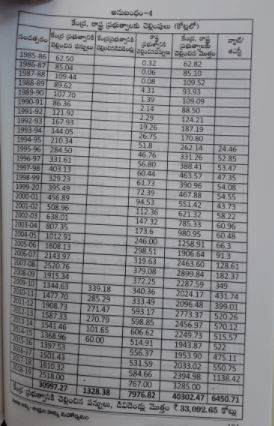(KC Kalkura)
There is a proverb in Kannada: Asking the Saturn that is passing by to enter the house and go. (ದಾರಿ ಮೇಲೆ ಹೋಗುವ ಶನಿಯನ್ನು ಮನೆ ಹೊಗ್ಗಿ ಹೋಗು ಅಂತ ಹೇಳುವುದು /దారిలో పోతున్న శనిని ఇంట్లో దూరి పోమనడం).
Not only the wicked and the arrogant but the knowledgeable and the wise also sometimes indulge in such incriminating actions in enthusiasm. Astrologers say and a majority of the Indians sincerely believe that Saturn does not spare anybody. At any stage of life, for seven and half years He embraces every person. It is believed that irreparable harm is caused to the person during the period. However, death does not visit the victim during the ill-fated time. Many fables are told about the influence of Saturn on epic celebrities. e.g. Lord Ganesha challenged that Saturn could not dare to touch him. Saturn countered him that he would embrace him during a particular time for a brief period. At the appointed time, Ganesh entered a thorny bamboo bush and came out after the specified time. Saturn pointed out that it was under his influence that Ganesha was sitting in an uncomfortable place. Saturn made the Epic Emperor, Nala, lose his empire.
Believe it or not, the Modi-led NDA Govt is inviting troubles, one after the other. Its intention may be bonafide. But many steps being taken appear more to demean the previous governments than to serve the agenda of a welfare state. Yet it refuses to learn lessons from experience. Whether it is demonetisation or GST or Article 370 or amalgamation of banks or the abolition of the Planning Commission and establishment of NITI Ayog or disinvestment of the public sector undertakings (PSUs), are some of them. Even after the negative or disastrous results, it is not stopping. It reminds La Mancha, named Alonso Quixano, the tragic hero of Spanish Novel Don Quixote by Miguel de Cervantes, a leader of the European Renaissance Movement. Latest in the ‘hit list’ is the Rashtriya Ispat Nigam Limited, popularly known as Visakhapatnam Steel Plant. In support of its action, it quotes its mouth peace, NITI AYOG. Its history is written in letters of blood and flesh. In April 1963 C.Subrahmanyam, Union Minister for Steel and mines made a statement in the Parliament that a shore-based 5th Steel Plant would be established in Visakhapatnam. Later the Government went back on its promise and announced the setting up of two Steel Plants in Salem, Tamil Nadu, and Hospet, Karnataka. Neelam Sanjeeva Reddy was the Union Minister of steel and Mines in Lal Bahadur Shastri’s Govt. The whole of Andhra Pradesh, cutting across the regional biases rose up, almost in arms to protest, for ignoring its long-standing demand to establish one at Visakhapatnam. It led to violence. Busses were burnt. Trains were stopped. Stones were thrown at Govt Offices. Telephone and electricity wires were cut. Schools and colleges were boycotted. Dharnas were organized. Trade and commerce volunteered to organize bundhs/ hartal. Few Gandhians like Amruta Rao (MLA) undertook fast unto death. 32 young precious lives were lost in agitation that ensued fast. For months together, there was a semblance of anarchy in the state. Irrespective of age and region only one slogan was heard all over the State: Visakha Ukku, Andhrula Hakku (విశాఖ ఉక్కు; ఆంధ్రుల హక్కు).
It is no exaggeration that Independent India had not witnessed an agitation of such a magnitude. It was not a mere agitation, but a movement under the leadership of one of the most respected Gandhian, not only in AP, but all over the country, Tenneti Viswanadham (1896–1979) “A political figure from Visakhapatnam. He took an active part in India’s struggle for independence. He is remembered now for his role in the establishment of a modern and the only shore-based steel plant at Visakhapatnam.”
On 1 July 1966 CM, Brahmananda Reddy moved a resolution in the Assembly and spoke for 90 minutes detailing the history, background, and viability of the project in Visakhapatnam. Justifying the demand, the opposition backed him and the Assembly unanimously passed the resolution and urged the Central Govt to set up the Steel Plant in Visakhapatnam. The entire opposition, consisting of 67 members, from all the districts en masse resigned their membership of the Assembly.

After prolonged unrest, the Govt of India yielded. On 17 April 1970, the Prime Minister, Indira Gandhi, announced the government’s decision to establish a steel plant at Visakhapatnam. With the offer of assistance from the government of the erstwhile USSR, a revised project evolved some years later. In the 1970s, Kurupam Zamindars donated 6,000 acres of land for the Vizag Steel Plant. A new company Rashtriya Ispat Nigam Limited (RINL) was formed on 18 February 1982. Visakhapatnam Steel Plant was separated from Steel Authority of India Ltd, (SAIL) and RINL was made the corporate entity of Visakhapatnam Steel Plant in April 1982. Vizag Steel Plant is situated on 33,000 acres (13,000 ha), and is poised to expand to produce up to 20 MT (Million tons) in a single campus. Turnover in 2011-2012 was Rs 14,457 crores. On 20 May 2009, Prime Minister Manmohan Singh launched the expansion project of Visakhapatnam Steel Plant from a capacity of 3.6 MT to 6.3 MT at a cost of Rs. 8,692 crores. But the investment was revised to 14,489 crores. It must be noted that Manmohan Singh, the economist as Finance Minister in Narasimha Rao’s Govt initiated the process of disinvestment in India and introduced liberalized industrial and economic policies. He himself was convinced that Visakha Steel was a viable project and worth being preserved as a national asset.
The need and necessity for preserving national assets depend not on the basis of profit and loss accounts and the balance sheets alone. There are other considerations like its utility and usefulness; the foreign exchange it saved and earned; the tax it paid, without suppressing the turnover and income; employment, directly and indirectly, it has generated and ancillary industries it is feeding. Visakhapatnam’s economic and industrial growth can be divided into pre and post steel plant era; a sea change in socio-economic life. In fact, Visakha Steel was a profitable proposition till 2015-16 and paying dividends to the Govt of India. From 2016-17 it is not paying the dividend. But it has cleared all the taxes. Its progress, self-explanatory are listed below.

Note 1.Year. 2. Dividend paid to the Central Govt. 3. Taxes paid to the Central Govt. 4. Amount of taxes paid the State Govt. 5. Total of four and five. 6. VAT/GST.
The Visakhapatnam Steel Plant Township (VSPT), also known as Ukkunagaram (lit. ‘Steel City’) was developed on 8000 acres of land, providing housing and accommodations for many of the employees. The township has 8200 dwellings spread over 12 sectors and 3900 acres, as well as a green belt of 4260 acres. The town also has multiple temples, churches, mosques, gurudwara, athletic facilities, hospitals, police stations, post offices, shopping malls, schools, indoor and outdoor stadiums. Some of the most famous temples include the Shivalayam, Goddess Kali temple, Venkateshwara temple, Shirdi Baba temple, Puri Jagannadh temple, Tri-Shakti temple, Ayyappa temple, and the Sathya Sai Baba Mandir. Besides, there are marriage halls and clubs for conducting various activities for entertainment such as screening of movies, hosting parties, felicitating people and celebrating festivals.

It may sound political overtone. Yet it is pertinent to note here that the present union Govt, every inch makes a claim that it had inherited a bankrupt economy in 2014 and it salvaged it.
Conceding that Visakha Steel was in the doldrums, was not more than six years sufficient to extricate it. Whether it was hypothecating the gold in the 1990’s or the disinvestment spree now, assets were created, for posterity in more distressed conditions.
Noted Jurist Palkiwalah often said: “We have no right to rob the future.” Supposing the future is more horrendous, where should they go? No assets to be mortgaged! Opposition to privatization and disinvestment is not opposed to private enterprise.
Let not the Govt invest further in the public enterprise. Let it encourage competition among the establishments. Comparison between the public and the private sector is a subject to be discussed separately. In cases of foreign investments, let us not forget that East India Company was a business organization interested in the spice trade.
It captured and ruled India for 200 years. Are we going to, callously ignore the patriots’ effort to liberate the country from their clutches!
It looks as though the BJP has been hostile to the interests of AP. It is an active conniver in the division of United AP. But for its active support in the Parliament, the united AP would not have been bifurcated. Its interest, Telangana, where it has some hold. Though declared a National Project, Polavaram is made to starve with some pretext or the other.
The only bank with Andhra tag (Andhra Bank)which was the product of ideals Indian nationalsim was merged with Union Bank India.
After the division, disregarding the report of the Central Govt appointed Sivaramakrishnan Committee, Prime minister Narendra Modi laid the foundation on 22 Oct 2015, on the auspicious Vijayadasami for Amaravathi.
Vijayadasami is said to be the day on which Pandavas defeated the army of Duryodhana in Viratanagari and the greatest Hindu Empire in South India, Vijayanagara was established in 1336 by Harihara and Bukka Raya under the patronage and guidance of Vidyaranya, the Pontiff Sringeri. Pitched as a world-class riverfront capital city, Amaravathi was sought to be an energy-efficient and green city with concentration on industrial hubs. The event was held amid fertile agricultural lands and in the presence of a galaxy of dignitaries, including Ministers from foreign countries. It was hailed as the futuristic capital of AP. Modi also brought water and mud from the Yamuna.
He, however, remained silent regarding the Special Category Status (SCS) which he, earlier canvassed during the election campaign. Now when the present Govt in AP wants to trifurcate the Capital, the State Unit of the Party alone is raising a meek voice. The National leadership and the central Govt have left it to be dealt with by the state minions. During the movement in the 1960s, the effigies of Neelam Sanjeeva Reddy were burnt by the Congress Workers across the State.
Is the AP BJP unit prepared to protest against Nirmala Seetharaman?
(KC Kalkura is an advocate from Kurnool)